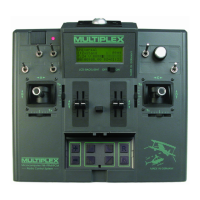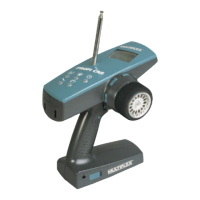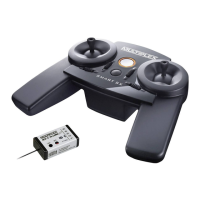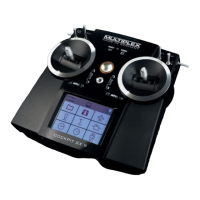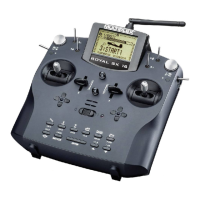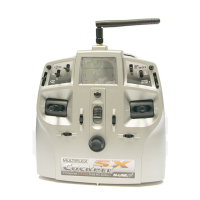Creating and customising models
First, perform a hardware calibration:
Press the F button. This generates the "true" centre, without the influence of the trim
or mixer inputs on the servo.
If the servo is not in the desired centre position at this stage, it is essential to correct
the control surface position mechanically (by re-positioning the output arm on the
servo, or otherwise adjusting the linkage).
Wherever possible, the fine-tuning for point P3 for the servo calibration should not
exceed ±15%.
5. Press the F button to allocate the centre. This passes the Centre value, 0%, to
all the servos with the same basic function. This enables you to set the centre
for the current servo regardless of the stick position.
Moving the stick, or pressing the F button erases the allocation!
Note regarding "allocation"
Allocating in this way saves you the bother of holding the stick at one end-point, and
enables you to use both hands in order to measure the control surface travel on the
model. If required, you can make corrections using the central wheel.
Calibrating multiple servos with the same function:
Example:
Servos 1, 2, and 4 are assigned as MAINROTOR-X (mixed function). Point P3 is
opened in the Calibrate menu for servo 1. When you now allocate the centre
using the F button, all the swashplate servos will immediately move to the centre.
At this point, you can use the central wheel to adjust the current servo to match the
other two.
6. Use the wheel to set the servo to the desired centre. Any changes you make
are immediately visible on the model itself.
7. If the centre is correct, confirm the change and exit the menu.
8. Select the next servo that you want to edit.
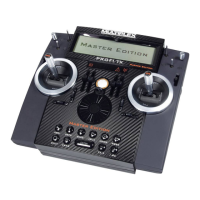
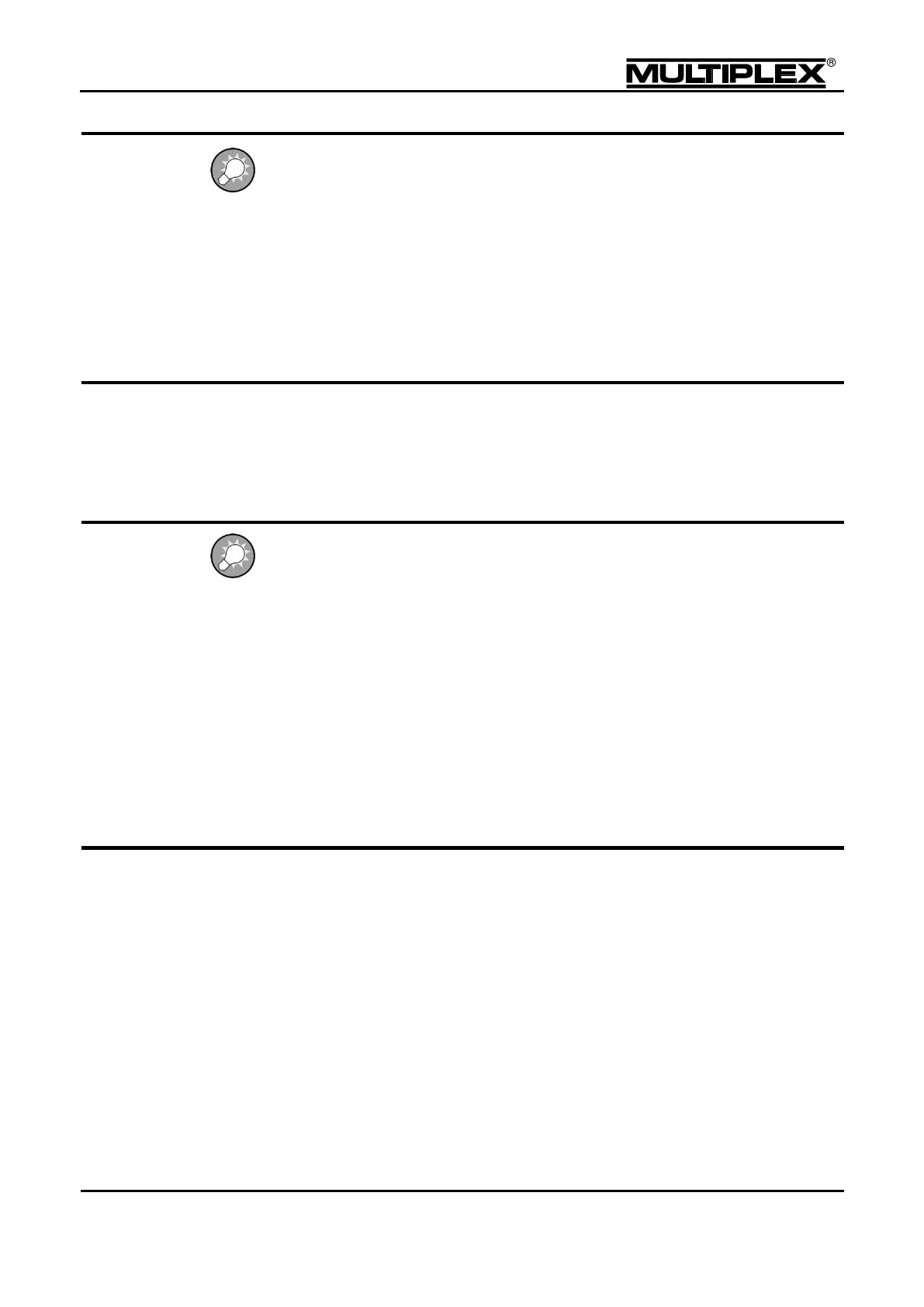